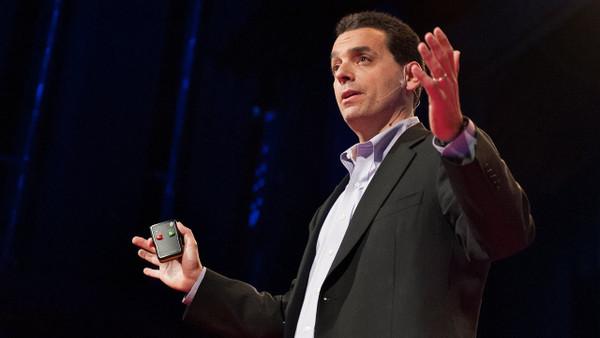The puzzle of motivation | Dan Pink
Curated from: TED
Ideas, facts & insights covering these topics:
8 ideas
·3.44K reads
14
Explore the World's Best Ideas
Join today and uncover 100+ curated journeys from 50+ topics. Unlock access to our mobile app with extensive features.
The candle problem
Suppose you get a candle, some thumbtacks and some matches. Your job is to attach the candle to the wall so the wax doesn't drip onto the table. How would you do it?
- Some people try to thumbtack the candle to the wall, which doesn't work.
- Some will try to light a match, melt the side of the candle and try to stick it to the wall, which doesn't work.
- However, most people will figure out the solution after five or ten minutes.
The key is to overcome what's called functional fixedness.
35
565 reads
The power of incentives
Building on the candle problem, scientist Sam Glucksberg divided participants into two groups:
- He asked one group to establish norms and averages for how long it typically takes someone to solve the candle problem.
- In the second group, he offered rewards for finding the solution the quickest.
It took the second group, on average, three and a half minutes longer.
33
497 reads
Extrinsic motivators don't work for creativity
Businesses often use incentives to motivate people. If they want people to perform better, they reward them.
But science shows that contingent motivators work only in some circumstances. For many tasks, they not only don't work but cause harm: It narrows focus and restricts possibility.
Yet most businesses use extrinsic motivators, a carrots and sticks approach. And it doesn't work.
34
457 reads
If-Then rewards work for repetitive tasks
Glucksberg did another similar experiment using the candle experiment, but this time the thumbtacks were left out of the box. The result is that the incentivised group beat the timing for norms groups.
If-then rewards work well for tasks where there is a simple set of rules and a clear destination to go to. Rewards, by nature, narrow focus and restricts possibility. But they often destroy creativity.
35
416 reads
Routine-based work can be automated
White-collar workers are doing more routine, rule-based work and less creative, conceptual work. Certain types of accounting, financial analysis or computer programming have become easier to outsource or automate.
Too many organisation are making their policies about talent and people based on outdated assumptions. If we want high performance, the answer is not in incentives. We need a different approach.
33
384 reads
Intrinsic motivation
Intrinsic motivation is the desire to do things because they matter, are interesting, or part of something important.
The new operating system consists of three elements:
- Autonomy: the urge to direct our own lives.
- Mastery: The desire to get better and better at something that matters.
- Purpose: The longing to do what we do as part of something larger than ourselves.
52
370 reads
How to motivate people
The traditional idea of management is compliance. But if you want employees to engage, self-direction will work better. It means paying people adequately and fairly, then giving them autonomy.
For example, Atlassian, a software company in Australia, allow its engineers a few times per year to work on anything they want for 24 hours. The engineers then present the stuff they've developed to their teammates the following day. This worked so well that the company has taken it to the next level with 20% time.
37
355 reads
Results Only Work Environment (ROWE)
In a ROWE, people don't have schedules. They show up when they want and don't have to be in the office. They just have to get their work done.
This results in increased productivity, worker engagement and worker satisfaction, while turnover goes down.
38
397 reads
IDEAS CURATED BY
CURATOR'S NOTE
Many organisations are trying to improve performance using outdated assumptions. If we want high performance, the solution is not rearranging the wrong strategy. We need a new approach.
“
Ishank R's ideas are part of this journey:
Learn more about creativity with this collection
How to find inspiration in everyday life
How to stay motivated
How to cultivate a positive mindset
Related collections
Read & Learn
20x Faster
without
deepstash
with
deepstash
with
deepstash
Personalized microlearning
—
100+ Learning Journeys
—
Access to 200,000+ ideas
—
Access to the mobile app
—
Unlimited idea saving
—
—
Unlimited history
—
—
Unlimited listening to ideas
—
—
Downloading & offline access
—
—
Supercharge your mind with one idea per day
Enter your email and spend 1 minute every day to learn something new.
I agree to receive email updates




